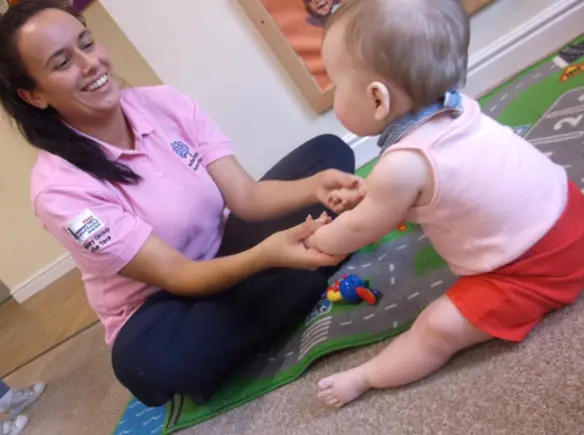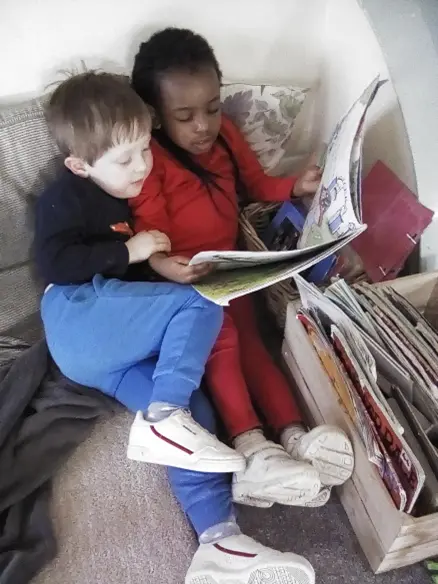Warm and responsive interactions between adults and children are used to support them to regulate their emotions through co-regulation. This is the first stage of supporting children to develop the skills required for managing feelings independently (co- regulation leads to self-regulation).

Create a calm, positive and nurturing environment.
Have quiet/calm areas that children can spend time in.

Use strategies from Development Matters for supporting self- regulation throughout the Early Years.
Whole group approaches to teaching emotional regulation strategies, e.g. Yoga.
Whole group activities that encourage identification of strengths; e.g. creating visual reminders of strengths through posters, certificates, stickers and other visuals, serves to remind children of all the things they are good at. These can be collected in a ‘Good to be Me’ or ‘All about Me’ book.
Celebrate small achievements, such as playing with something new or having a go with something.
Use of attachment aware practices and tuning into the child’s feelings and world (attunement). Attunement involves the adult initially recognising the emotion that the child is feeling. The adult then acknowledges this emotion by naming it, and then empathises with the child about how they are feeling. Remaining attuned to the way a child is feeling promotes positive attachments. Name, validate and understand children’s feelings.
Good communication with parents/carers to share key information in the morning; e.g. what emotions are the children bringing with them into the setting today?
Create positive relationships that support wellbeing and the gradual development of self-regulation. When adults tune in to children’s signals and respond sensitively and consistently to meet their needs, children can feel safe, relaxed, and loved. Regular patterns of activities which create routine and help children to know what to expect next also foster a sense of security and self-confidence.
Discuss and model feelings and emotions often:
- Use and label a wide vocabulary of feelings and emotions words.
- Create displays focused on developing emotional vocabulary.
- Use stories and therapeutic metaphors to teach about feelings and normalise a wide range of feelings.
- Label the feelings for the child when they are experiencing them.
Use of emotional validation strategies when a child is upset, angry or distressed, (e.g. Emotion Coaching approach).